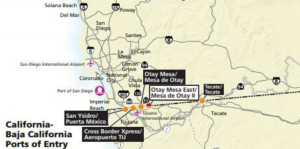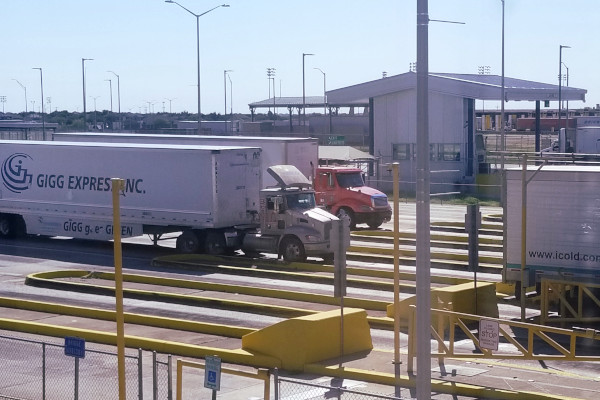
International and Domestic Investment in Cross-Border Commerce by Jacob Wenzel
 Every day thousands of people traverse the United States-Mexico border for work, to visit family, or to pursue a new life outside of their home country. These people are what the average person thinks of first when the topic of the U.S-Mexico border is brought up. While that is an important facet of what the border crossing does, there is another aspect to it that is less talked about but just as important. That aspect is the daily movement of vast quantities of commerce that goes across the border which is essential to both the United States and Mexico’s economy. Without this cross-border commerce, the two countries would be crippled financially.
Every day thousands of people traverse the United States-Mexico border for work, to visit family, or to pursue a new life outside of their home country. These people are what the average person thinks of first when the topic of the U.S-Mexico border is brought up. While that is an important facet of what the border crossing does, there is another aspect to it that is less talked about but just as important. That aspect is the daily movement of vast quantities of commerce that goes across the border which is essential to both the United States and Mexico’s economy. Without this cross-border commerce, the two countries would be crippled financially.
Both countries recognize the value of cross-border trade, it is essential that the process is efficient and effective. One major example of this was the creation of the Otay Mesa Port of Entry located in the San Diego-Tijuana region in 1983. This port of entry was created to help divert some of the influx of truck and rail crossings from the San Ysidro (Tijuiana) Port of Entry. Otay Mesa has quickly become the third busiest commercial crossing on the United States-Mexico border. The Otay Mesa port of entry is the premier example of transnational cooperation as both countries have poured countless resources into it since its creation. In 2022 both countries agreed to a $1.47 billion dollar project that will greatly improve the efficiency in cross-border commerce. This project alone is estimated to bring in $3.4 billion dollars for each of the countries over the next forty years due to the improved efficiency at which commerce will be able to go from one country to the other.
It is not just the United States and Mexico that recognize the value that cross-border commerce brings. Other countries are investing heavily in areas surrounding both sides of the border to try and stake their claims in this lucrative trade. China, in particular, has invested roughly $4.1 billion dollars into Mexico since 2005 and since their initial investment, the amount of money invested has gone up significantly each year. China’s investment in the border has taken shape in many ways such as the creation of factories and the introduction of many Chinese-based companies into the area. The investments made by different countries into the border does not come as a surprise as the billions of dollars in commerce that cross the border each year and the free trade agreement between the United States and Mexico is too good of a financial incentive to pass on.
ABOUT THE AUTHOR
Jacob Wenzel is an intern at the Reshoring Institute and a senior at the University of San Diego where he is pursuing a degree in both political science and international business.
He has recently come back from a study abroad opportunity in Tokyo, Japan where he studied the international business practices of many Asian countries. This trip established Jacob’s love for travel and no matter where his work takes him he is excited to learn more about where he will end up. Jacob is a part of several clubs/school lead organizations on campus including the international school’s mentoring program and the USD radio club where you can tune into his radio show every week. Outside of school, Jacob has worked at several law firms and political campaigns as well as other jobs like a local pizza shop in San Diego. After graduation Jacob wants to explore the international business world further before applying to law school later in the future.



